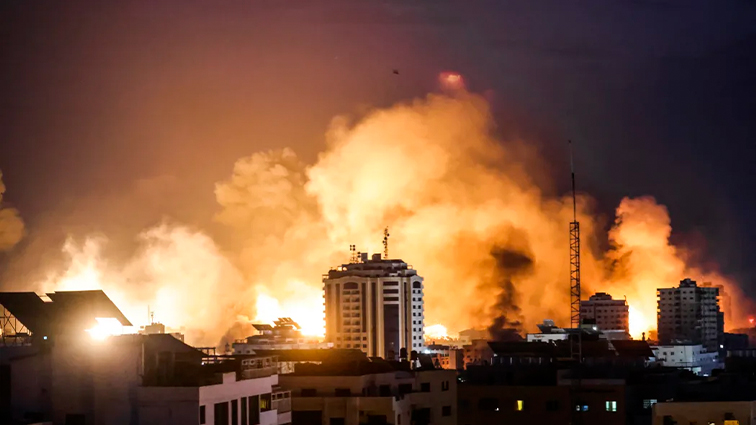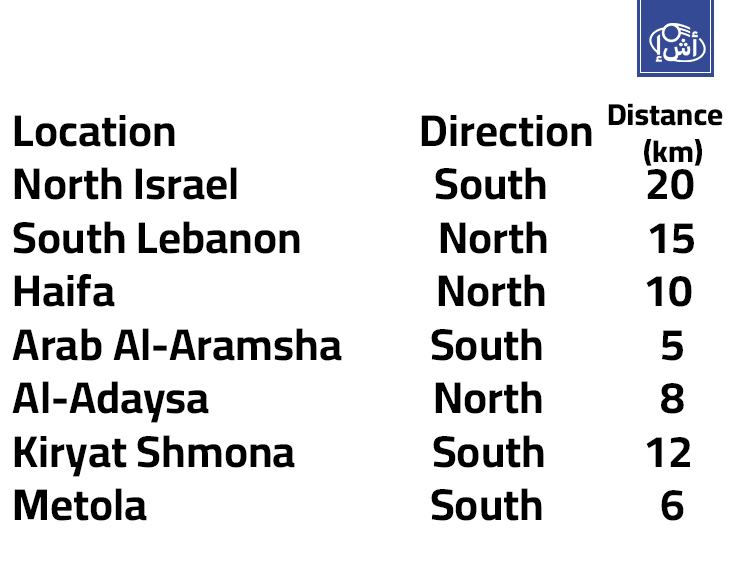American naval vessels appeared immediately after the outbreak of the war in Gaza in a way that suggests that a regional war threatens the eastern Mediterranean, and as the war enters its tenth month, the specter of the development of the conflict still exists.
In practice, the war that included the Gaza Strip and southern Lebanon presents the image of a complete regional conflict. Over the past months, it has expanded towards the Red Sea, which witnessed a decline in shipping traffic. On the other hand, Iran entered the conflict line for once, after the attack on its embassy in Damascus, but The main thing is that the United States and its European allies view the conflict in a way that includes two issues:
- The first is the legitimacy of the current war, as it is, according to their perception, part of the fight against terrorism. In practice, all statements fall within the framework of protecting civilians, and in the best case, liquidating “Hamas” politically, while the possibilities of regional conflict remain part of the strategy to redraw the region as part of the results of the current war.
- The second issue is repositioning Israel within the regional system that the United States wants. Regardless of the complexities of the Palestinian situation, there is an attempt to isolate the peace path of the two-state solution from the upcoming regional form, which primarily includes Israeli relations with Saudi Arabia.

For the United States, the previous two issues justify any military adventure at the regional level, as political statements appear to be a case of creating a path that attempts to avoid regional conflict, but in the end, there are military manifestations that present indications that there are political costs that are inevitable so that Israel’s “victory” takes another form. Far from the ambitions of Israeli Prime Minister Benjamin Netanyahu.

The upcoming possibilities can be read through the nature of the American and European military development on the eastern coast of the Mediterranean, in addition to the diplomatic moves that Lebanon has witnessed to try to besiege the conflict in a special way. The following graph provides a picture of the development of the military situation:

The graph shows the development of the military presence on the eastern coast of the Mediterranean, as the American aircraft carrier Eisenhower was deployed on October 20, 2023, and a British aircraft carrier arrived on January 10, 2024. As for NATO, destroyers arrived on November 5, 2023, and a French frigate was deployed on 15 December 2023, an Italian submarine on March 15, 2024, German naval patrols that began on April 10, 2024, a Canadian logistics ship that arrived on May 5, 2024, an addition to the Spanish Naval Task Force that was deployed on June 1, 2024, and American destroyers were reinforced on June 20. 2024 with additional units.

Certainly, the military density does not reflect concern on the part of “Hamas”, which has goals within a specific geography. At the same time, Hezbollah’s strength remains primarily a state of deterrence, but it constitutes a political phenomenon that is exhausting with regard to redrawing relations in the region. Hezbollah’s deterrence is a political reality. For Washington, it makes any regional war within the path of the transformations it wants in the eastern Mediterranean.
“Hezbollah” and the balance of power
Some analyzes suggest that Hezbollah possesses military capabilities that make it capable of effectively confronting Israeli forces. Readings on this subject are based on the experience of the 2006 war, in addition to the nature of the current confrontation and the equipment the party used on the southern front. However, this approach ignores two basic factors. :
- The first is the internal political circumstances of Hezbollah in Lebanon. The constantly changing popular support is qualitatively different from the circumstances of the 2006 war, which is what made Hezbollah adhere to clear rules of engagement that attempt not to cross the northern Israeli lines toward the depth.

“Israel” tried to embarrass the party by carrying out assassinations deep inside Lebanon, and even within Syrian territory, but the limits of the engagement for Hezbollah remained at one goal, which is to alleviate the burdens borne by the people of Gaza. Although this goal did not prevent Israel from systematically destroying the Gaza Strip, it did On the other hand, it changed the nature of the front along the Lebanese-Israeli border, in a way that makes the post-war situation completely different.
The graph shows the displacement operations that occurred over a period of nine months in a way that changes the “demographics” along the front, making it an absolute military zone over time:

It is noted that with the beginning of the sixth month, displacement increased in a way that indicates the intensity of the battles on the one hand, and the prolongation of the war, which is considered a precedent for Israel. The following map shows the areas of displacement on the outskirts of the front:


- The second matter is the economic consequences for Lebanon or even Israel. The regional situation does not allow for reconstruction operations in Lebanon specifically, as happened after the 2006 war, and the economic drain on the countries of the region after the Arab Spring has plunged the eastern Mediterranean into a state of economic “bankruptcy” in general.

Lebanon’s losses, according to the graph, began at $100 million in October 2023 and rose steadily to $500 million in June 2024. As for Israel, losses began at $120 million in October 2023 and rose to $540 million in June 2024.
All the previous repercussions not only indicate the difficulty of expanding the scope of confrontations, but rather make the possibility of a regional war a primarily American option, as it depends on the type of agreement that can be concluded to neutralize Hamas from the regional equation, and the nature of Arab cooperation to place Gaza within a new political arrangement. On the other hand, Any agreement that ends forms of resistance in Gaza and makes the security of the Strip an Arab responsibility will make the Israeli northern front open again, and force fundamental amendments to the Lebanese political formation to also neutralize Hezbollah from the regional equation.

If the United States is indeed seeking to draw new political balances that ensure the stability of Israel’s relationship with the Gulf states, including the Kingdom of Saudi Arabia; It needs to change the Israeli northern front, especially with the current conflict carrying demographic shifts, and if it is difficult to fight a large-scale war in which NATO and American forces intervene, similar to what happened in 1982, then the military fleets in the Mediterranean will be within a state of political deterrence and to maintain an anxious balance. It could collapse in the future, as tension is what will remain whether the war expands or remains a permanent drain on the region.
Written by Mazen Bilal
The British government warns its citizens of the dangers of demonstrations in Morocco
